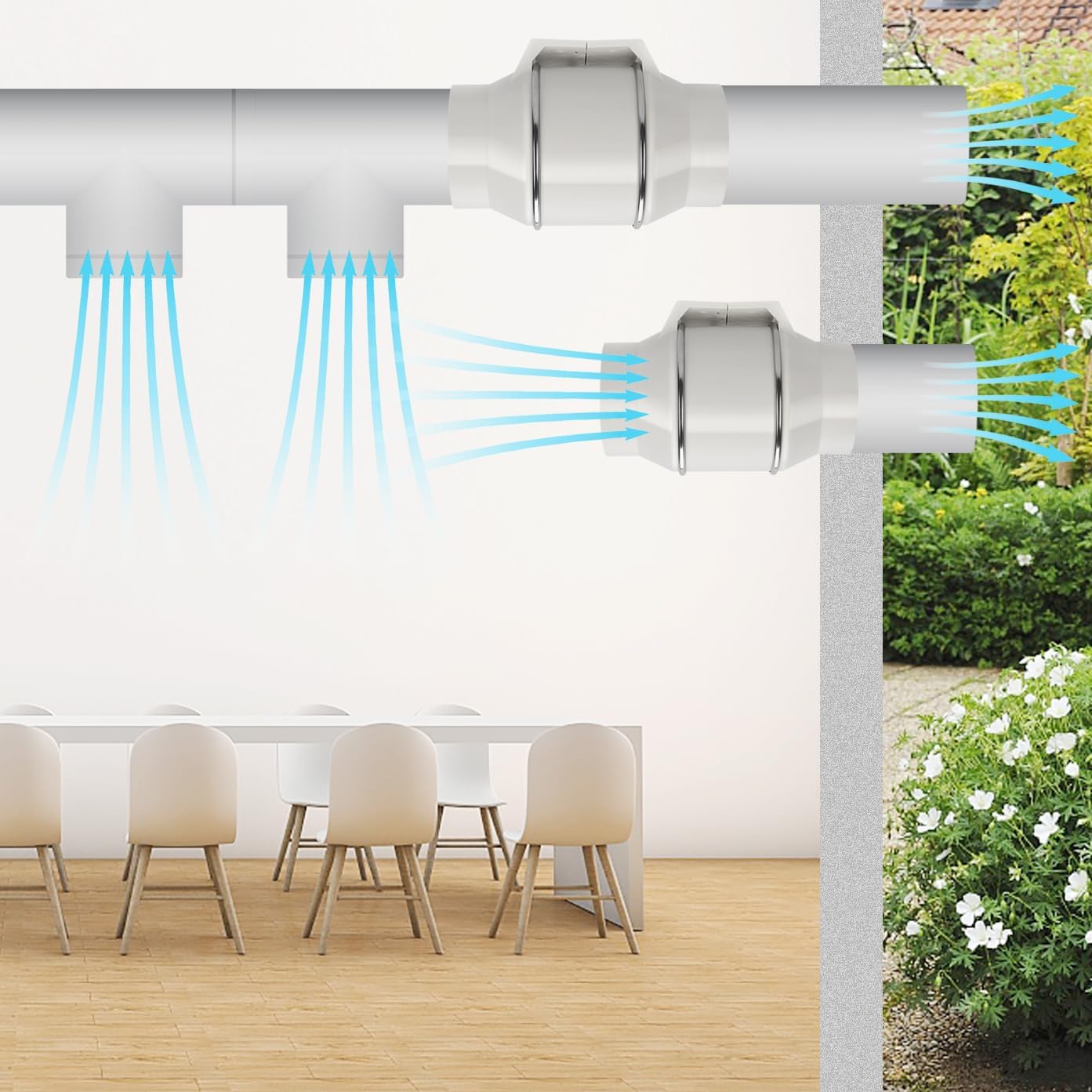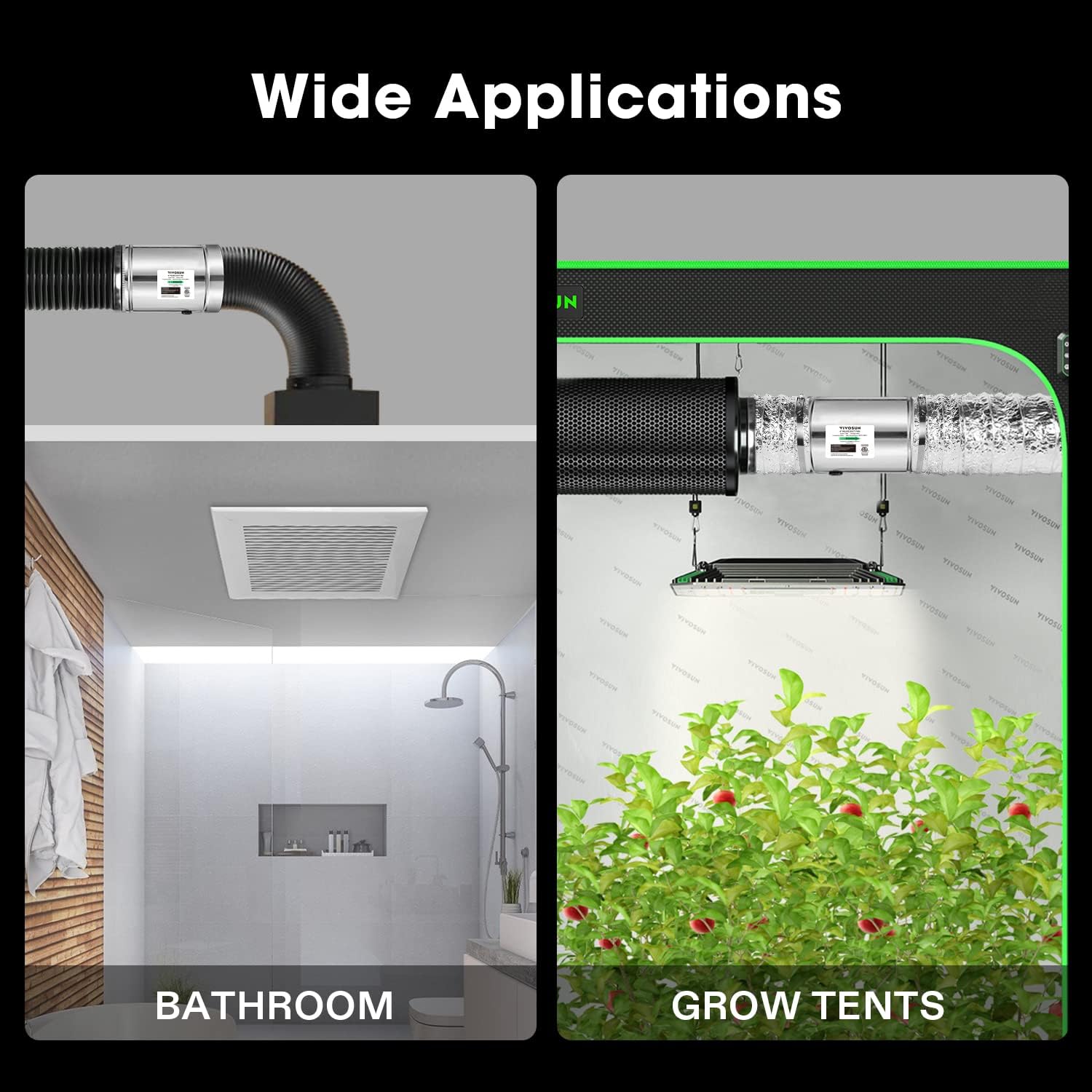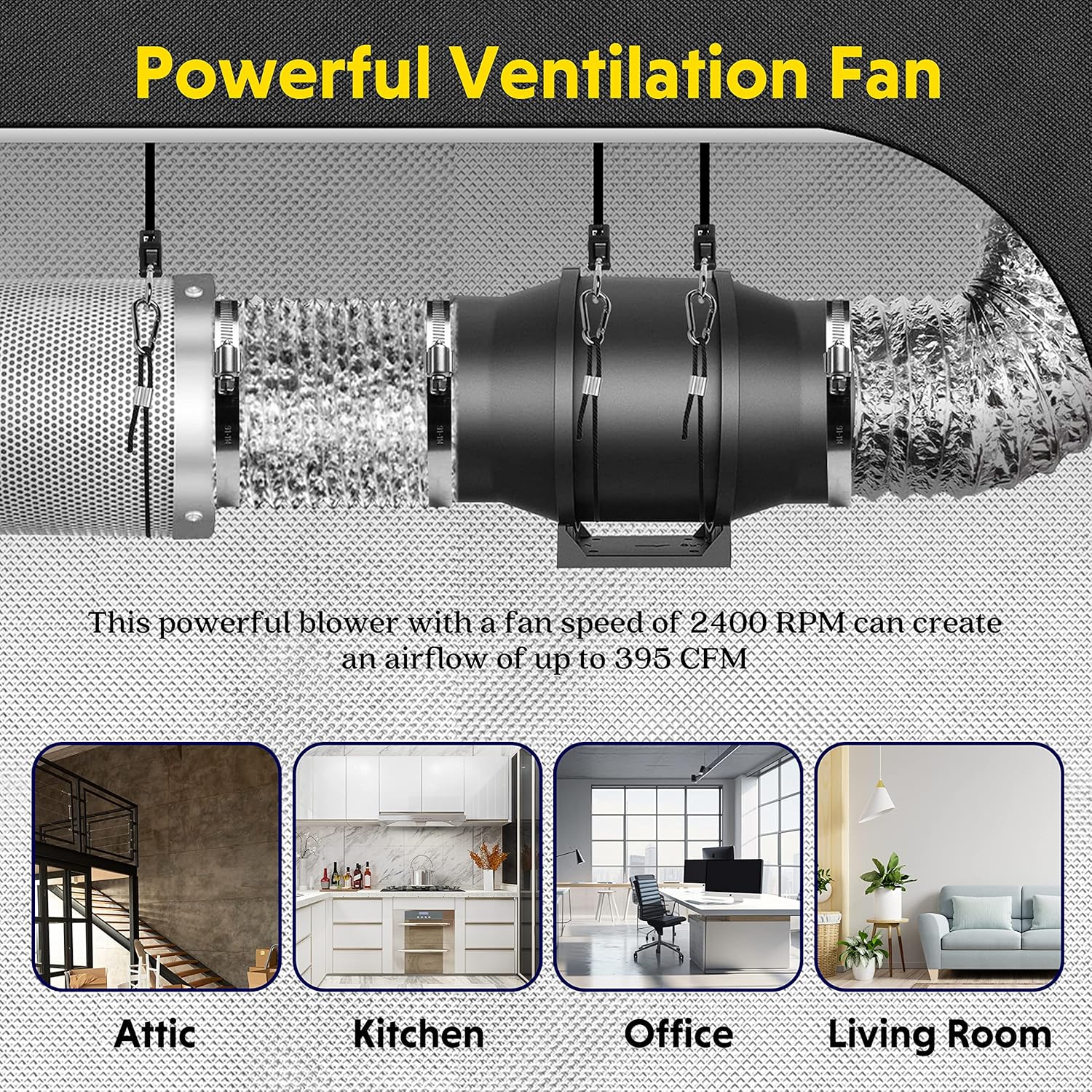Understand the key points of inline fans
Inline fans are a crucial component for anyone looking to significantly improve air circulation and quality within a building. These versatile devices are cleverly designed to be installed directly in your existing ducts, making them a discreet and powerful solution to a variety of ventilation challenges. Unlike traditional fans that operate in open spaces, this type of ventilator ensures effective removal of fresh or effective air by enhancing airflow through ducts. Their designs often combine durable materials such as ABS plastic and a robust mounting bracket that can be easily installed, mixing functionality with a stylish aesthetic that complements any setup. Whether you want to enhance the comfort of your home or optimize the environment of your commercial space, understanding how this ventilation unit works is the first step towards better air management.
Key Benefits: Why choose an inline pipeline solution?
Investing in modern inline fans brings many good benefits that contribute to a healthier, more comfortable indoor environment. One of the most important advantages is their excellent efficiency in moving the air with minimal noise, which is the one who needs a quiet inline fan fan. Many models are designed with advanced aerodynamics and precisely balanced blades, often the characteristics of centrifugal fans, which maximize airflow while keeping operating sound to a minimum. Additionally, these fans are often built for longevity, with powerful and energy-efficient motors that support sustainable life without compromising performance. This quiet operation, powerful airflow and energy efficiency blend makes them an excellent choice for users who value performance and environmental awareness. The ability to seamlessly integrate into various systems can also enhance its effectiveness, thus providing tailor-made ventilation solutions.
Choose your ideal fan: Buyer's Guide
Choosing the right inline tube fan requires careful consideration of your specific needs and the environment it serves. The main factor is the fan's airflow capability, measured in cubic feet per minute (CFM); for larger areas or applications with larger ventilation requirements, you need to look for high CFM inline fans. Noise levels are another key aspect. If the fan is installed in a living space or office, a model designed as a quiet inline fan is critical to comfort. Also consider the type of application. For example, a robust unit may act as a commercial interior duct fan in an office or cafeteria (such as an office or cafeteria), while in a warehouse, a dedicated unit may be required to use a dedicated unit, requiring substantial air transport. Also, make sure the fan diameter matches your existing duct for proper fit and optimal performance. Many suppliers, such as Ningbo Aoshun Electrical Co., Ltd., offer a range of options that meet a variety of requirements, highlighting the importance of choosing a product that aligns with your specific ventilation goals.
Multifunctional app: Where can I use these ventilated fans?
These ventilated fans are versatile and find their place in a variety of environments to improve air quality and circulation. In residences, they are often used as inline exhaust fans in bathrooms to quickly remove steam and prevent mold, or in the kitchen to vent cooking smells and excess moisture. The basement benefits from this fan by preventing damp and moldy odors. They are also an integral part of many HVAC inline fan setups, improving the efficiency of the heating and cooling system by ensuring conditional air reaches all parts of the building. In professional applications such as planting rooms or hydroponic systems, they provide important air exchange for plant health. Commercial spaces such as offices, retail stores and cafeterias use these fans to keep employees and customers fresh and comfortable. Even larger facilities such as warehouses can benefit from industrial inline pipe fans to control humidity and dust, demonstrating the wide range of utility of these devices.
Quick Installation and Setup Guide
Installing this type of ventilation unit is often a simple process, especially when emphasizing a modern design that is easy to set up. Most units come with a robust mounting bracket or metal strap, making the fan's fixation in the pipe simple and effective. Before you start, make sure you have selected a fan that matches the diameter. This installation usually involves cutting a portion of an existing pipe, inserting a ventilation device, and then firmly attaching the pipe to both ends of the fan unit using a clamp or tape. Power cables are usually cleverly positioned at flexibility and then need to be connected to your power supply. Some premium models are even compatible with speed controllers, allowing you to adjust the airflow to fully meet ventilation needs. While many installations can be a DIY project, for complex setups, or if you are not sure, it is always recommended that you consult a professional for security and optimal performance. Proper installation is the key to maximizing ventilation system efficiency.
Maintain your system's life and peak performance
To ensure that your ventilation system works effectively for years, some regular maintenance takes a long way to go. Models made of premium, durable sleeves are designed for life and minimal maintenance, but regular inspections are still beneficial. Over time, dust and debris accumulate on the fan blades and within the housing, potentially reducing airflow and efficiency. Gently cleaning the blades and interior decoration every few months (after disconnecting the power) can help maintain peak performance. It is best to check the pipe connections regularly to ensure they remain safe and dense, thus preventing loss of airflow. Checking the electrical connection for any signs of wear or damage is another important measure of safety and performance. By following these simple maintenance tips, you can ensure that your fans, whether they are quiet inline fan fans or powerful units for commercial needs, continue to provide effective ventilation and contribute to a healthier indoor environment.





